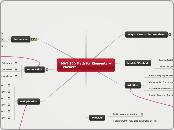MAT 156 Math for Elementary Teachers
Ways of Recording Numbers
Tally System
Egyptian
Mayan
Babylonions
Roman System
Hindu-Arabic
Models/Context
Discreet (set) Model
Counted Quantity
Characterized by combing two sets of discreet objects.
Continuous (Numberline) Model
Measured Quantities
Characterized by the combining of two continuous quantities.
Addition
Closure Property of Additive
Commutative Property of addition on whole numbers (w)
Associative Property of Whole Numbers (w)
Identity Property of Addition of Whole Numbers (w)
Division
Partition (equal sharing)
Measurement (repeated subtraction)
Problem Solving
The 4 Steps"How to solve a Problem"
Understanding the Problem
Devise a Plan
Implement your Strategy
Check your Answer
Sequences
Arithmetic Sequences
Geometric Sequences
Recurrence Relationship Sequences
Subtraction
Take-away
Comparison
Missing addend
Multiplication
Closure Property
Commutative Property
Associative Property
Identity Property
Distributive Property
Zero Property
Properties of Subtraction?
Closure Property
Commutaive Property
Identity Property
Different ways to Add
Lattice Method
Any Column First
Low Stress
Scratch Method
Left-to-Right
Multiplication
Discreet
As repeated addition
